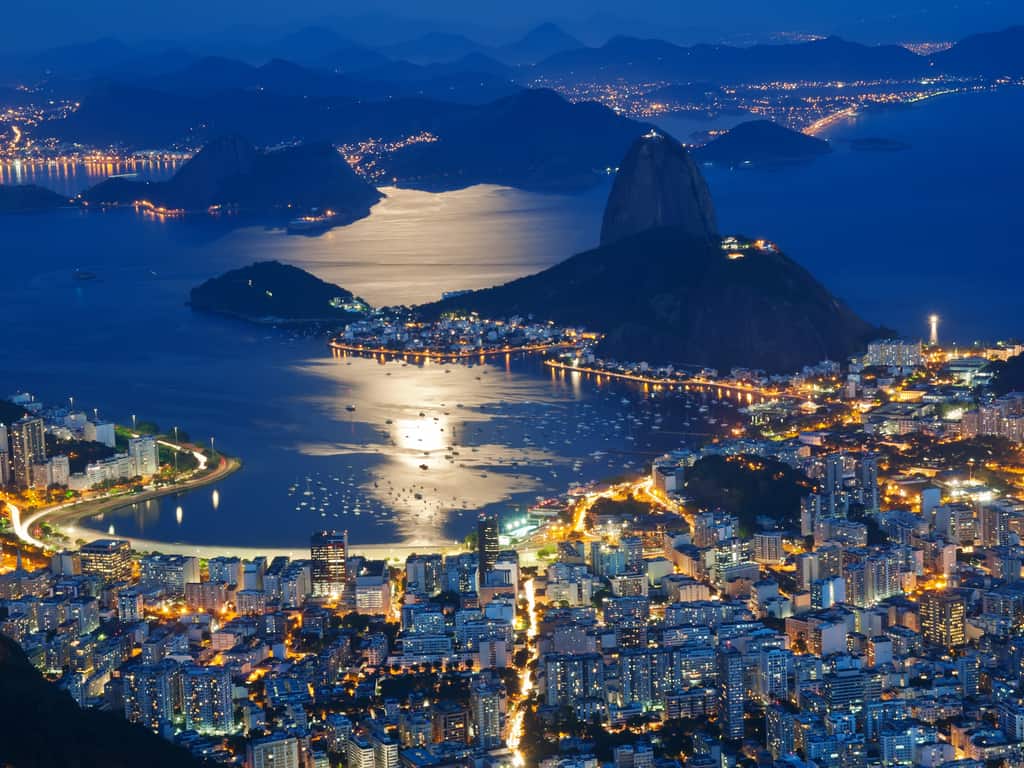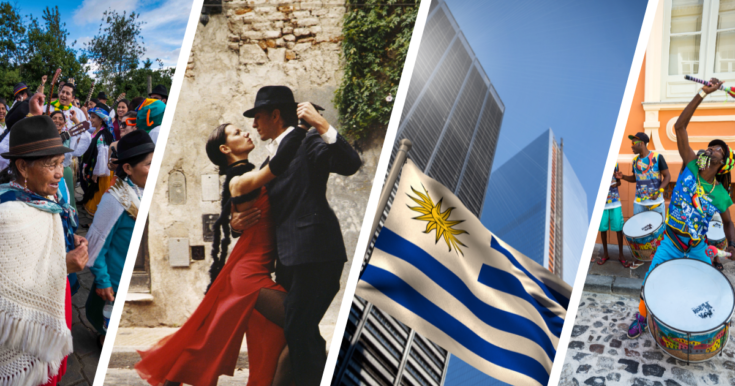Planning to visit Rio de Janeiro, Brazil, is easier with our travel guides! Get the most out of your vacation by exploring the best things to do in Rio de Janeiro, Brazil, and the best places to visit in Rio de Janeiro, Brazil, below. Wondrous Drifter, a Web 3.0 travel startup, hopes to have a significant impact on the world.
Table Of Content
- Arcos da Lapa
- Carnaval
- Catedral de São Sebastião
- Copacabana
- Cristo Redentor
- Forte de Copacabana
- Ilha de Paquetá
- Ilha Fiscal
- Ipanema
- Jardim Botânico
- Maracanã
- Museum of Tomorrow
- Parque das Ruinas
- Petrópolis
- Prainha Beach
- Quinta da Boa Vista
- Santa Tereza and Escadaria Selarón
- Mosteiro de São Bento
- Sugarloaf
- Tijuca National Park
- Explore South America
Arcos da Lapa
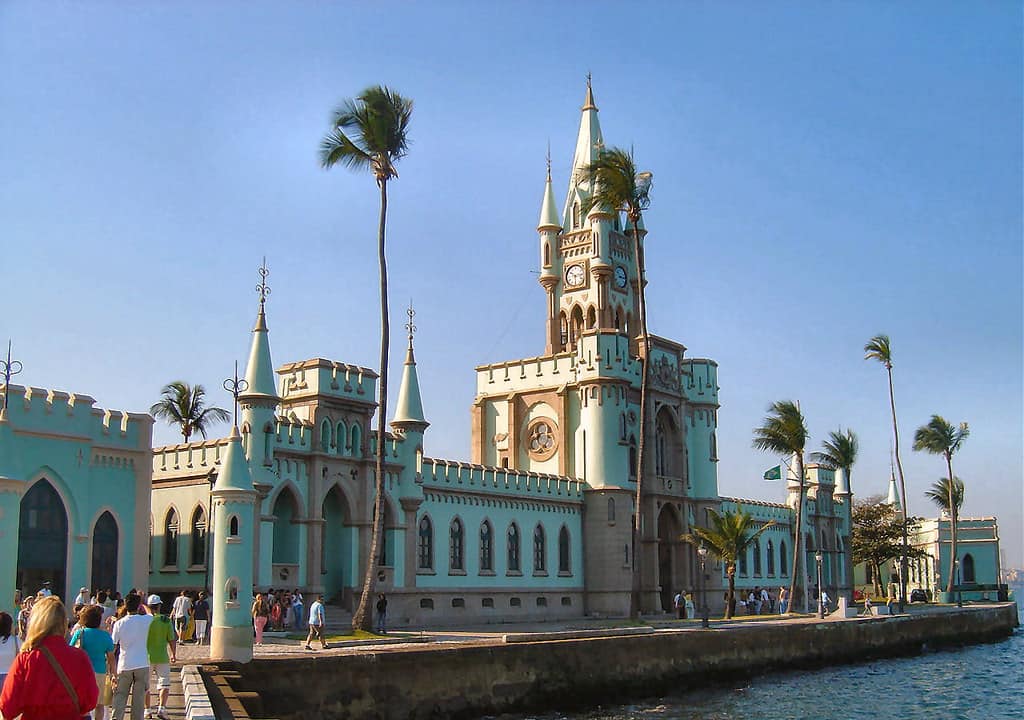
The city’s official picture tells you you have arrived in Lapa.
Arcos da Lapa, known as Lapa Arches, was created for the first time in the mid-18th century and is regarded as Brazil’s most significant colonial-era building.
The indigenous and African slaves constructed the Lapa Arches in Rio de Janeiro to deliver water to the city’s population after water shortages had plagued the city due to the vandalism of escaped enslaved people.
Late in the 19th century, the Lapa Arches were no longer necessary, as other water sources became available.
It has 42 huge double arcs and viewing glasses in the superior part of the Romantic-style limestone construction.
As a tourist destination, the Arcos da Lapa is a great place to look for directions if you get lost. Cardeal Câmara Square, in Rio de Janeiro’s Central Zone, is where you’ll find it.
Fundiço Progresso and Circo Voador, two of the city’s most influential music halls, are nearby.
Come and discover one of the bohemian district’s major symbols!
Address: Rua Manuel Carneiro (off Rua Joaquim Silva), Rio de Janeiro
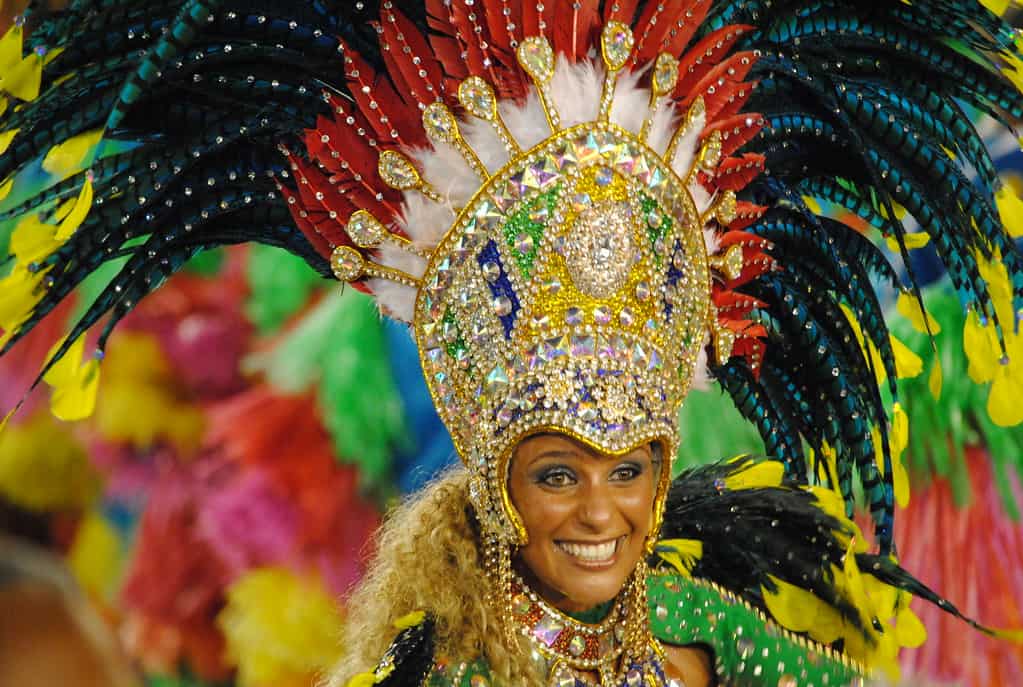
Join the celebration of the world’s most famous pre-Lenten here!
Hundreds of thousands of people go to the city’s street parades, samba parties, and shows during the four days leading up to Ash Wednesday, when the celebrations are most spectacular.
Carnaval is a huge tourist attraction in Bahia and Recife, although Rio’s is the most extravagant.
Samba schools parade in an iconic building designed by Oscar Niemeyer, one of Brazil’s most prominent architects.
More than 90,000 people can see the dancers perform on the Sambódromo’s long parade path, flanked by stadium-style boxes.
There are street parties called blocos in Rio that last from 8 in the morning until almost 8 the following day.
It’s a 700-meter-long path that’s 13 meters wide. The first time it was used was in 1984, upgraded for the 2016 Olympics.
Get tickets to Rio de Janeiro’s most spectacular performance and be part of the world’s most colorful and visited carnival!
Address: Rua Marquês de Sapucaí, Rio de Janeiro
Catedral de São Sebastião
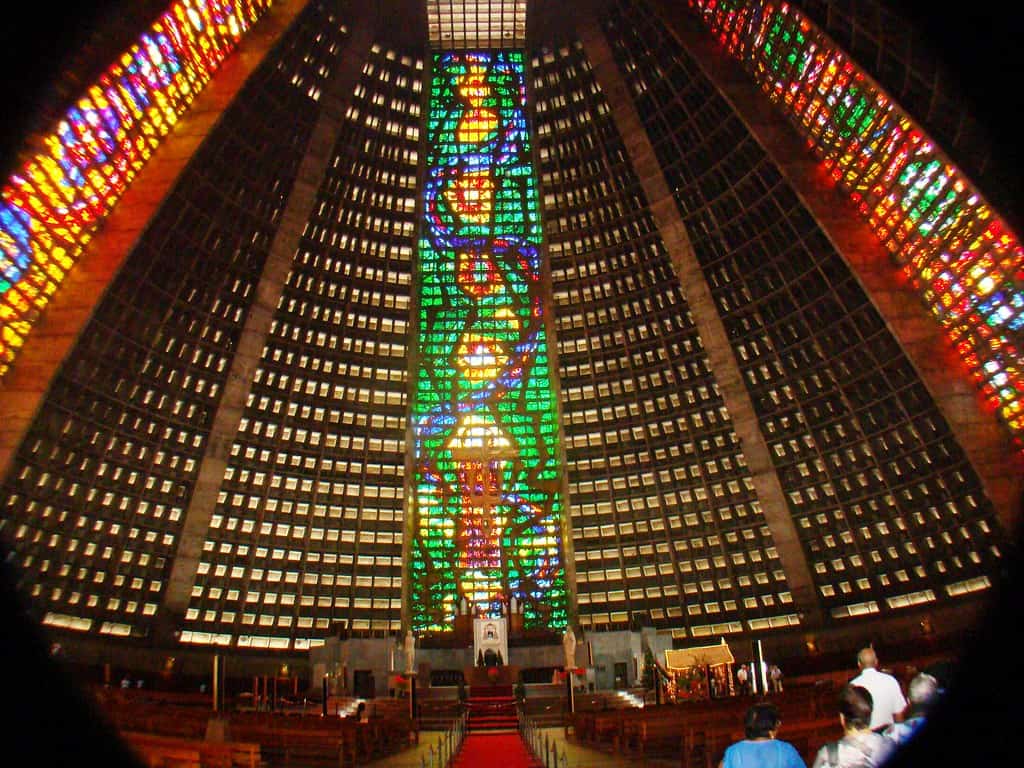
The house of Rio de Janeiro’s Bishops.
Catedral de São Sebastião is home to the Roman Catholic Archdiocese of the Metropolitan Cathedral of Rio de Janeiro.
It is also known as the Cathedral of St. Sebastian of Rio de Janeiro.
The cathedral serves as the seat of the Rio de Janeiro Metropolitan Archbishops.
Moreover, Saint Sebastian, the patron saint of Rio de Janeiro, is honored in this church.
To create Rio’s Catedral de So Sebastio, architect Edgar Fonseca drew inspiration from Mayan pyramids and modernized their soaring features.
With an interior of 96 meters, the church can accommodate 5,000 worshipers and is known as the New Cathedral to distinguish it from its immediate predecessor Nossa Senhora do Carmo.
The inside is bathed in a rainbow of color thanks to four 64-meter-high stained-glass windows.
The church is illuminated from the inside out at night, making it a prominent landmark in the cityscape.
Make a pilgrimage here and experience truly unique architecture.
Address: Av. Chile 245, Rio de Janeiro
Copacabana
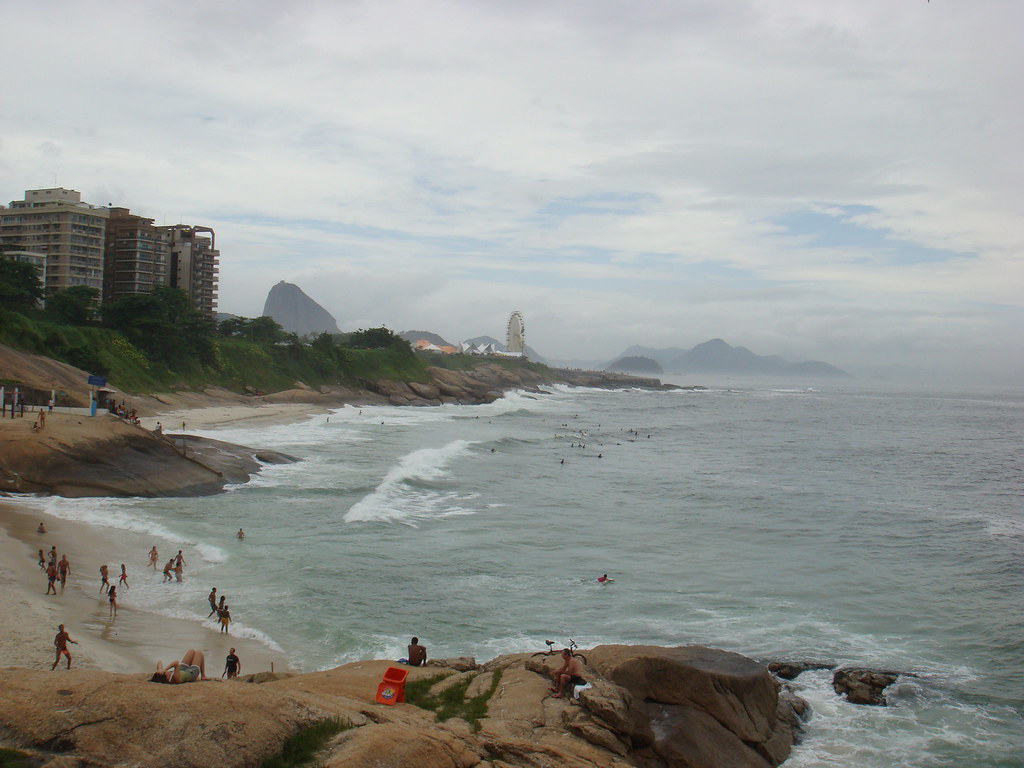
You’ve seen this beach in a lot of films, haven’t you?
Rio de Janeiro, Brazil’s South Zone, is home to Copacabana (Portuguese pronunciation), a Bairro (neighborhood).
Balneario Beach, a 4-kilometer (2.5-mile) stretch of sand, is a world-famous draw.
It’s rare for a city to have a four-kilometer-long sand beach at its core, much less one that extends throughout its downtown.
Attractions including Avenida Atlântica, Avenue of Our Lady of Coquimbo, and the other smaller streets have a lovely couple of centuries-old architecture, great hotels, and famous restaurants and cafés.
In fact, they are all within walking distance of the beach in Copacabana.
One of Rio de Janeiro’s most famous landmarks, the Copacabana Palace, was built in the 1920s and designated a national monument.
When the fort was captured in 1922, its weaponry was used to defend the city of Rio de Janeiro. Also, Copacabana Fort was constructed in 1914.
Enjoy a summer-like vacation with class and history at Copacabana.
Address: Praça Coronel Eugênio Franco, Rio de Janeiro
Cristo Redentor
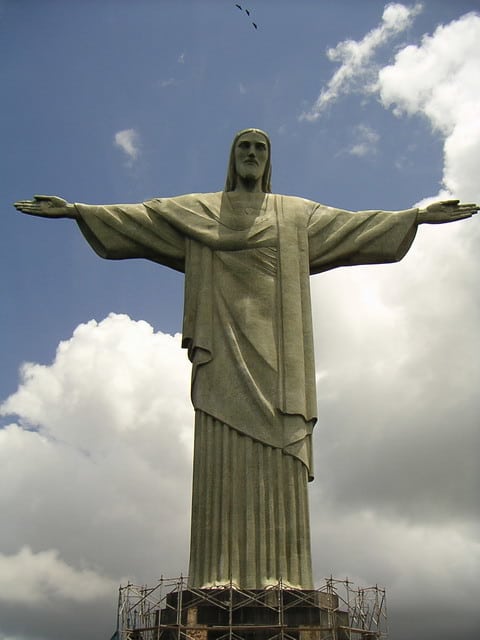
One of the seven wonders of the world.
Cristo Redentor, also known as Christ the Redeemer, Brazilian Catholics raised nearly all the money needed to build the prominent structure, which was built from 1922 to 1931.
The iconic shape of Sugarloaf and the 709-meter-tall Corcovado mountain is almost as well-known symbols of Rio de Janeiro.
Heitor da Silva Costa, a Brazilian engineer, and Albert Caquot, a French engineer, helped sculptor Paul Landowski design and build the Art Deco statue.
The figure stands 30 meters high and has arms that extend 28 meters, weighing six hundred and thirty-five metric tons. It is made of reinforced concrete and soapstone.
A chapel at the base of the 8 meters high structure is frequently used for weddings and christenings.
When the Archdiocese of Rio de Janeiro agreed with several organizations in 1990, including Grupo Globo, the oil company Shell do Brasil and environmental regulator IBAMA, and the city government in Rio de Janeiro, to conduct restoration work.
In 2003 and early 2010, more work was done on the statue and its surroundings.
The platform surrounding the statue was made more accessible in 2003 by adding escalators, walkways, and elevators.
You should never miss the main attraction of Rio de Janeiro.
Address: Parque Nacional da Tijuca – Alto da Boa Vista, Rio de Janeiro – RJ, Brazil
Forte de Copacabana
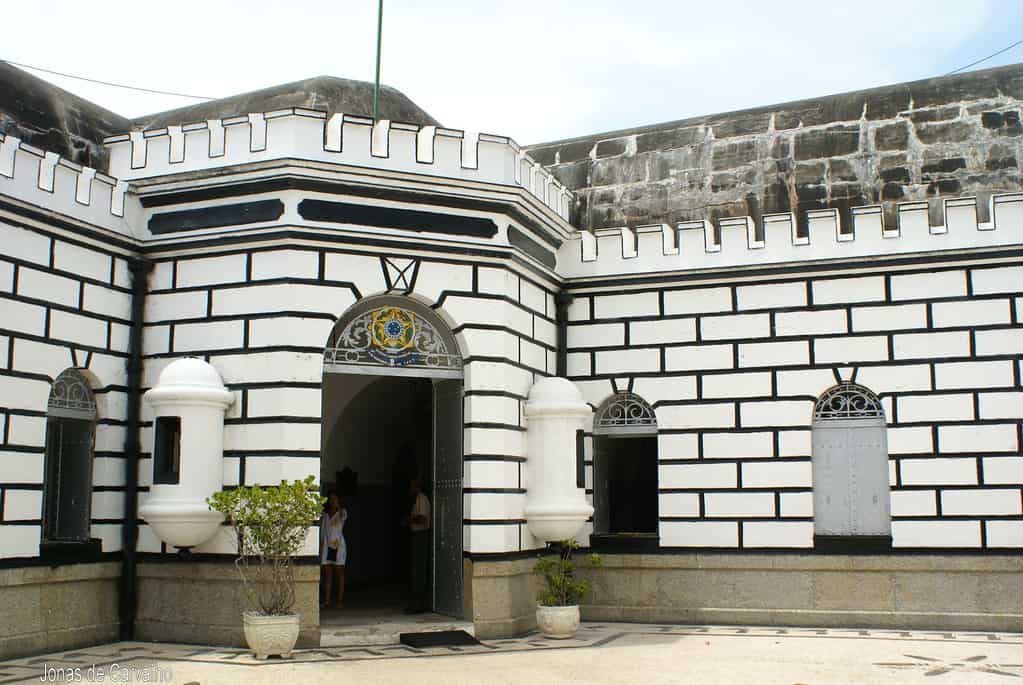
Attraction inside an attraction.
Fort Copacabana, or Forte de Copacabana in Portuguese, is a military installation located near the southern end of Copacabana Beach in Rio de Janeiro, Brazil. It is the focal point of the Copacabana neighborhood.
The fort was built on top of a modest church that once housed a replica of Bolivia’s patron saint, the Virgen de Copacabana.
The beach of Copacabana and the entrance to Rio de Janeiro’s harbor were to be guarded by a sophisticated coastal defense fort, which the Brazilian army began constructing in 1908.
Tuesday through Sunday and on federal holidays, the Museum and Fort are open from 10 a.m. to 6 p.m., with extended hours on fortification days.
Several displays at the museum trace the evolution of the Brazilian armed forces over time.
Although Brazil’s role in WWII’s Italian campaign is acknowledged, its engagement in World War I is completely ignored in Brazilian history books.
Do not miss visiting one of history’s most attractive museums and war places.
Address: Praça Cel. Eugênio Franco, 1, Posto 6 – Copacabana, Rio de Janeiro – RJ, 22070-020, Brazil
Ilha de Paquetá
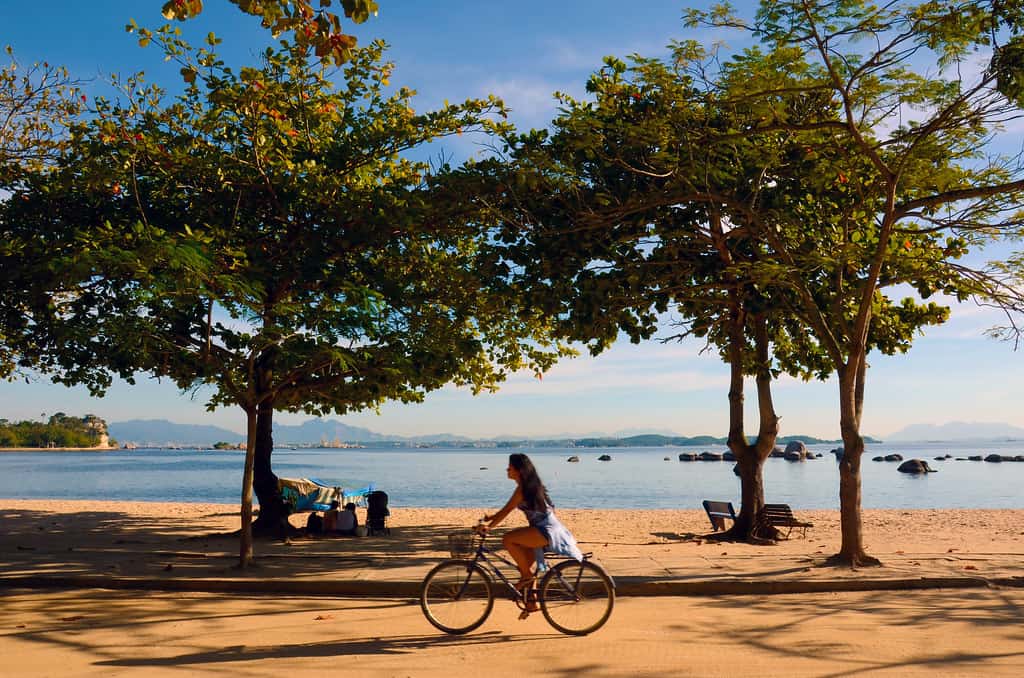
A paradise in Rio.
Have some fun by taking a boat ride to Ilha de Paquetá.
An hour’s boat ride from Praça 15 de Novembro takes you to Guanabara Bay, where the island of Paquetá rests.
While Emperor Dom Joao VI of Portugal spent his summers here in the early 1800s, the colony of Brazil became the center of Portuguese rule in 1808, after the Napoleonic invasion of Portugal.
The 1698 chapel of So Roque and the mansion of José Bonifácio de Andrada e Silva, the father of Brazilian independence, are among the significant old buildings in the city.
It’s possible to get around the island by foot, bicycle, or horse-drawn carriage, but there are no cars on the island.
You’ll discover spontaneous food kiosks on the island’s beaches, where you can get your fill of fresh seafood.
Day travelers will discover peace and tranquility in nature and protection from threats.
Address: Paquetá, Rio de Janeiro
Ilha Fiscal
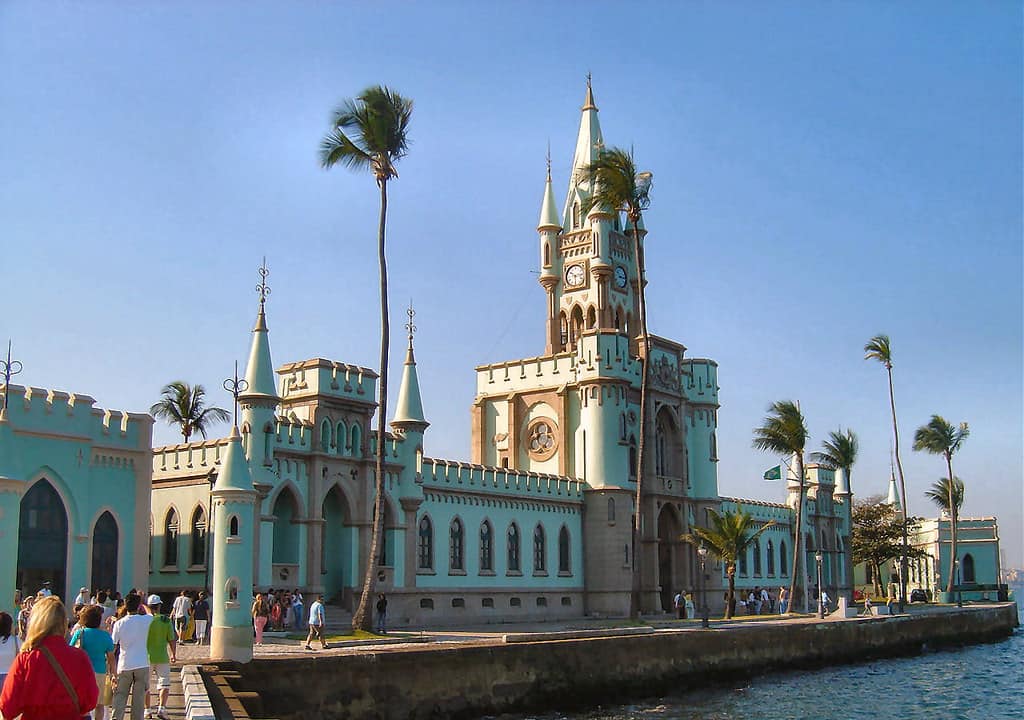
At first look, it feels like seeing a Disney Castle in real life!
It’s a bit of a surprise that the island of Ilha Fiscal, located in Guanabara Bay, is home to a castle.
The turrets and towers of this architectural wonder are now exposed to the public.
The emperor Dom Pedro II wanted a chateau-like structure, and this castle is one of the earliest examples of that style.
You won’t see many castles in Brazil, let alone South America, so you’ll feel extra unique.
Although it is one of only a handful of castles in Brazil, it is not the reason this location is so important in our country’s history.
This is more likely where the last Imperial party was held before the 1889 coup d’etat ended the party and declared the Republic.
Smooth hardwood flooring with mosaic patterns can be found throughout Ilha Fiscal, while spectacular stained-glass windows shimmer in the tropical heat of Rio de Janeiro’s city center.
The island can be reached either by bus or boat from the mainland.
Take a tour around the museum, which features exhibits on Brazilian naval history, while you’re out exploring.
Address: Guanabara Bay
Ipanema
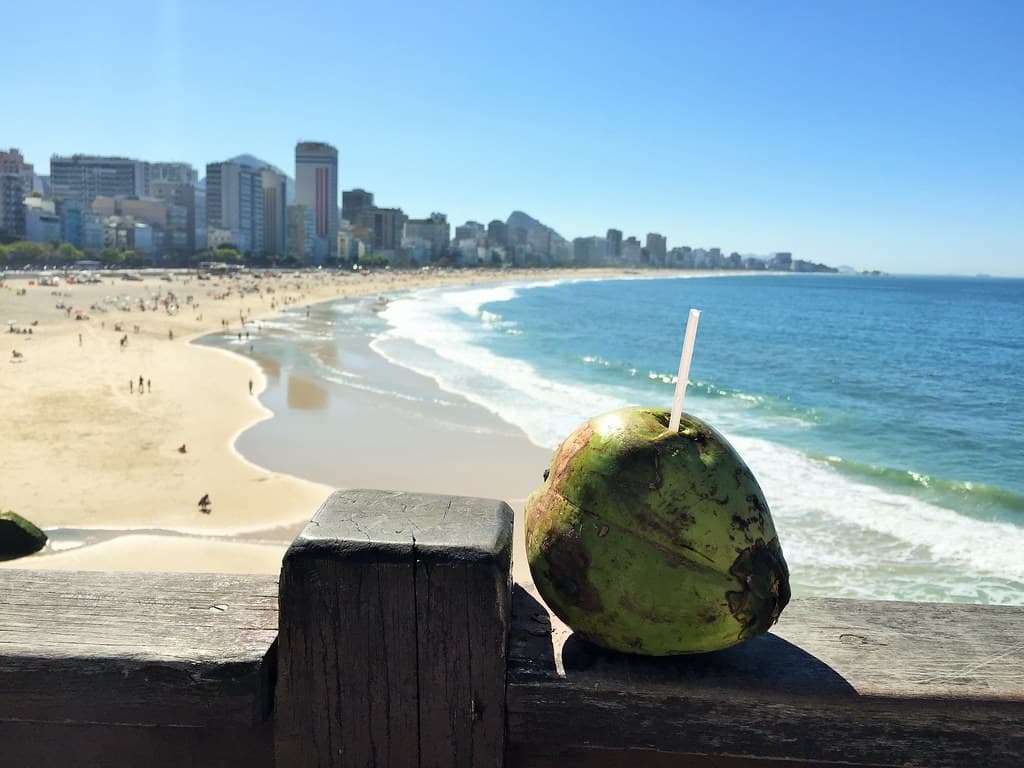
Amazing sights, good food, and great shopping.
It’s not just the white sand and hills at the southern end of Ipanema that make it a gorgeous beach; it’s also an urban beach where a lot goes on all the time.
Ipanema is a great spot in Rio to observe people as they go about their daily activities, whether exercising, playing, or simply sunbathing.
It is also a significant tourist destination in Rio de Jane; the beach where the bossa nova hit “The Girl from Ipanema” was recorded remains one of the city’s most well-known attractions to this day.
The Rua Visconde de Piraje is a great place to go shopping if you want to find something unique.
Rua Pail Redfern is home to some of the city’s top restaurants and hottest nightlife places.
In addition, there are a number of good museums and top art galleries in the vicinity, an avant-garde theater, and excellent hotels, all of which are within walking distance.
So if you’re looking for the best beach in the world year after year, go no farther than Ipanema in Rio de Janeiro.
Address: Ipanema, Rio de Janeiro, Brazil
Jardim Botânico
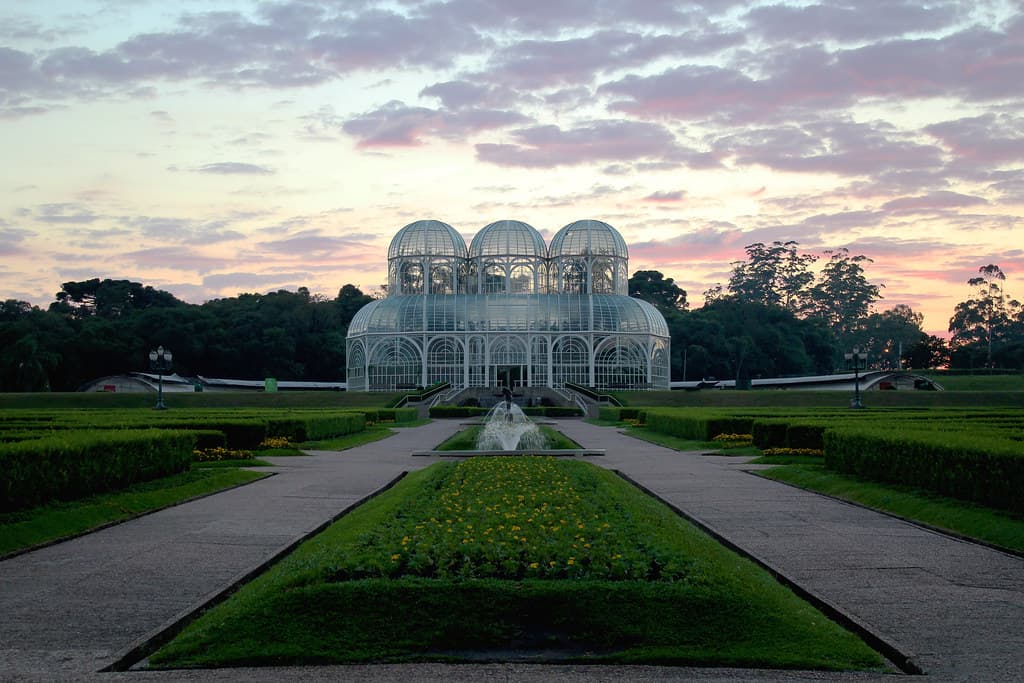
Attracting visitors with its towering palm palms, water lilies, and hundreds of plant varieties, Rio’s Botanical Garden is a delight.
Jardim Botânico, as the locals call it, is a 350-acre botanical garden situated at the base of Corcovado, and features exhibition gardens, ecological refuge, and a research laboratory.
A glass and iron greenhouse stuffed with over two thousand orchids was developed in the 1930s.
Also, Japanese Gardens that include bonsai trees, wood bridges, and cherry trees are visible on the site.
A Braille-signed Sensory Garden features a variety of scented herbs and plants.
UNESCO has recognized the garden as a Biosphere Reserve. It is home to over 8,000 plant and animal species, including the endangered Marmoset monkey and toucan.
In addition, the garden is home to numerous monuments, statues, and cultural institutions.
Tours by electric cart are also available for those who don’t want to walk around the gardens but still want to see the pau-brasil trees and royal palms.
Enjoy a leisurely stroll through the garden and notice the variety of plant types you’ll come across. One might easily spend a few hours here.
Address: R. Jardim Botânico, Rio de Janeiro
Not all those who wander are lost. Make memories all around the world. For the full list of countries to visit around the world, visit our around the world travel guide. When traveling the world, a visit to the United States is an absolute must. America is one of the easiest countries in the world to get to. You have to check out the fun states to visit in USA.
Maracanã

Anyone who’s a soccer fan out there? Get an up-close look at the country’s largest soccer stadium—the pride of Cariocas.
The Maracanã has a seating capacity of roughly 80 thousand people, which used to be 180 thousand.
In 2016, it was where the Summer Olympic Games kicked off and ended in the largest stadium in Brazil.
The stadium had a comprehensive makeover for the 2014 FIFA World Cup to accommodate about 78,000 spectators.
Rio’s best football clubs, including Botafogo, Flamengo, Vasco da Gama, and Fluminense, play in the stadium, live performances, and other events.
The brief trip would interest die-hard fans, but the general public would best avoid it.
There are many sports clubs and parks in the coastal area of the Lagoa Rodrigo de Freitas, which is near the cities of Ipanema and Copacabana.
Its waters are famous for yacht races and other water-based activities.
There’s no better way to experience the enthusiasm and intensity of soccer supporters than by watching one of their games live.
Address: Av. Pres. Castelo Branco, Rio de Janeiro
Museum of Tomorrow
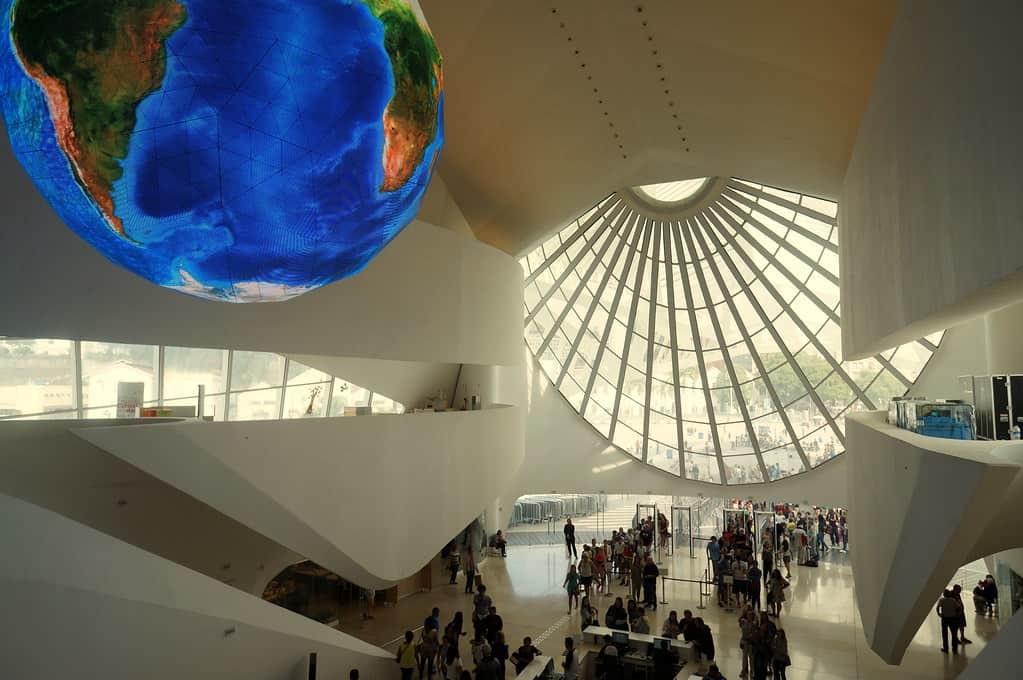
To imagine a more sustainable future, the Museum of Tomorrow invites you on a journey of discovery.
Only at museums can you disprove many of the Brazilian misconceptions currently flying around.
This museum, branded as the “Museum of Tomorrow,” may also be noted for making a strong case for environmental sustainability.
It is a venue that aims to investigate the ever-changing times we are living in and the possible futures that we could take in 50 years.
For a new museum in Rio de Janeiro, the focus is on concepts and ecology rather than items and technology. It’s highly worthwhile yet never dull.
You can see it right from the old port of Rio de Janeiro, an unusual building that looks like a solar-powered dinosaur mixed with an air conditioning unit.
The solar panels on the roof also follow the sun’s path, ensuring maximum energy harvesting.
Sustainability is the name of the game here. It’s all about tomorrow! This is one of the fantastic museums in the country that you should not miss.
Address: Praça Mauá, 1 – Centro. Rio de Janeiro, RJ
Parque das Ruinas
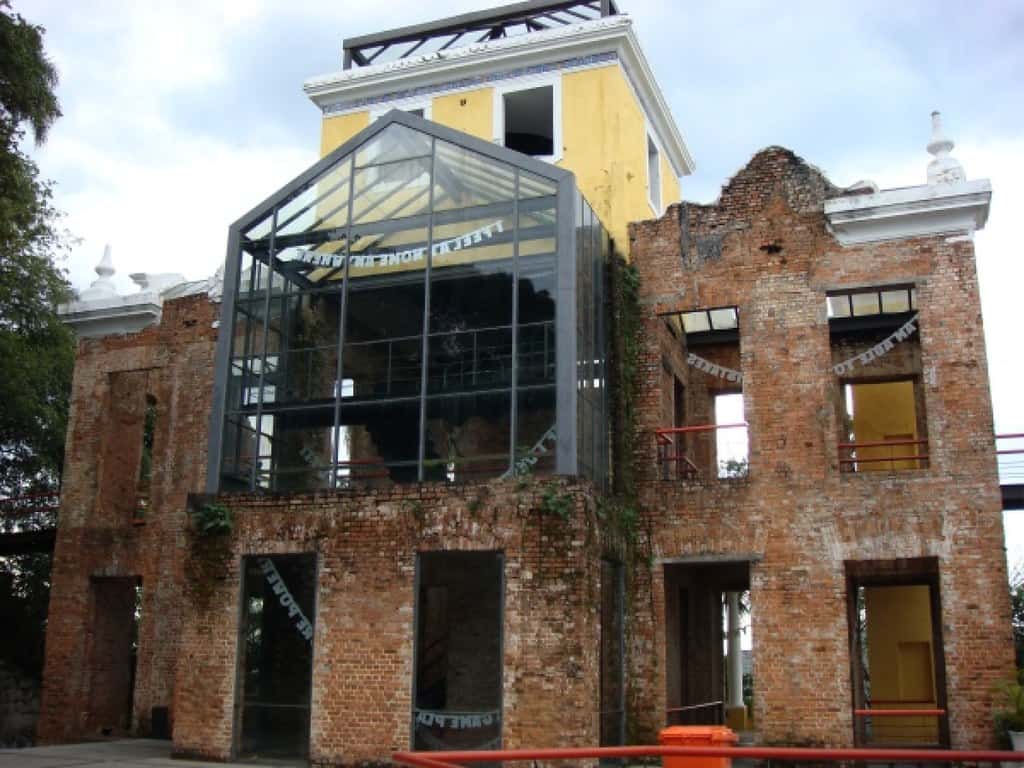
Don’t be fooled by the name: Ruins Park (Parque das Ruinas) isn’t just a relic from a bygone era. It has a lot more to offer than that.
Rio de Janeiro’s Parque das Ruinas Cultural Center in Santa Teresa is the best representation of the city’s “Belle Epoque” during the beginning of the twentieth century.
The home once owned by Brazilian heiress Laurinda Santos Lobo now sits in ruins in this park, with external brick walls and a recently constructed stairway.
Laurinda was known as the “marechala da elegância”. She used to host intellectuals and artists in the majestic palace, which is now one of architect Ernani Freire’s most stunning winning projects and home to experimental art.
Exhibit gallery, auditorium, stage, and café-bar are all included in the venue’s facilities.
Programs for the arts are diverse and include dance and poetry performances, theater, music, and visual art exhibitions.
Center programming for kids is a big part of it, especially on the weekends. This makes it a great place to go with your kids.
The view of downtown and Guanabara Bay makes this a great spot for a date, a relaxing evening, or just catching up with a friend or two!
Address: Sta. Teresa hill
Petrópolis
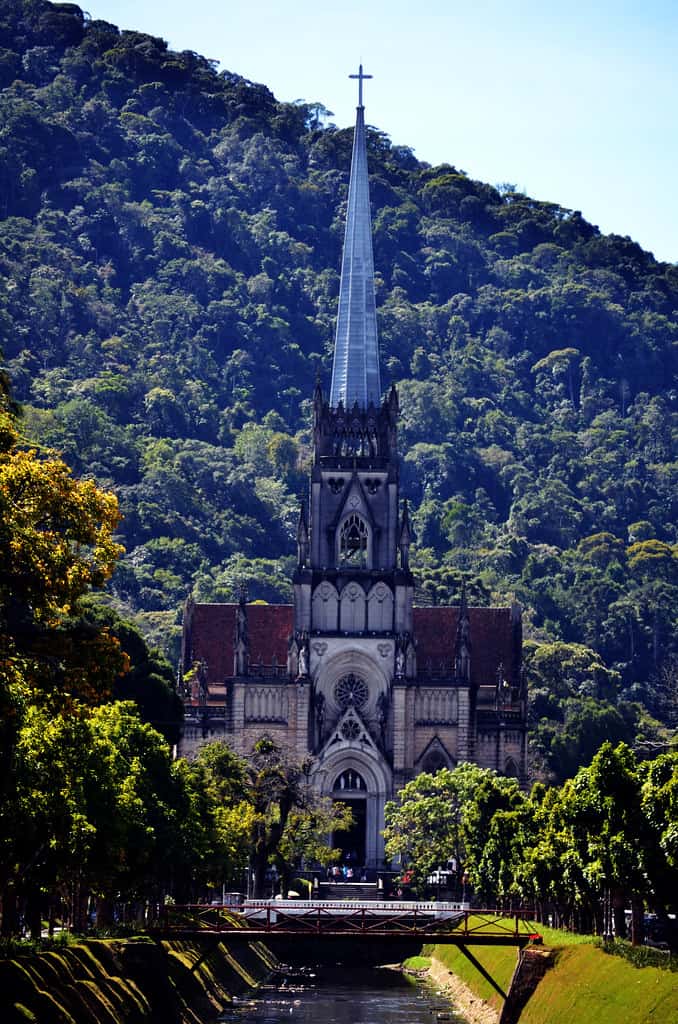
Historiophiles should not miss Petrópolis, an ancient city located in Brazil.
Petropolis may not be well-known outside of Brazil, but it’s quite improbable that any Brazilian hasn’t heard of it.
Having hosted the last monarch of Brazil is what makes this city distinctive.
It has a special place in the region because of its close ties to the Imperial Family and its role as a haven from the chaotic politics of Rio de Janeiro.
While most people associate Petrópolis with the Imperial Museum, the city also boasts the first national brewery, Bohemia, a nod to the city’s Germanic roots, which are evident in the city’s food.
Others may be unaware of the presence of a mansion created and built by Santos Dumont himself, one of Brazil’s most renowned inventors.
The historical center of Rio de Janeiro’s safest city allows us to walk around and check out the imperial time houses, learning about their original occupants through well-marked signs.
It doesn’t matter if you’re in the mood for history, architecture, or delicious beer; Petrópolis is a must-visit!
Address: Central Rio de Janeiro State, Southeastern Brazil
Prainha Beach

If you’ve been to Copacabana and Ipanema and still want more, but you’re also searching for something different, head down to Prainha.
Taking a 20-kilometer journey from the city center to Prainha, where the jungle meets the water, will give you a more authentic beach experience.
Prainha, meaning “little beach” in Portuguese, refers to a bit of stretch of sand, and it is a half-moon-shaped beach.
Surfers flock to this beach because of the crystal-clear waters, fine sands, and challenging waves.
On the other hand, the ocean around here is known for its strong undertow. As a result, only experienced swimmers or surfers should venture into these waters.
Prainha Beach is a great place to take a break from your daily routine and enjoy the peaceful surroundings.
You can always find a spot to lay out in the sun on the beach with a good book and a cool drink in your hand.
Address: Grumari, Rio de Janeiro, Rio de Janeiro, Brazil.
Quinta da Boa Vista
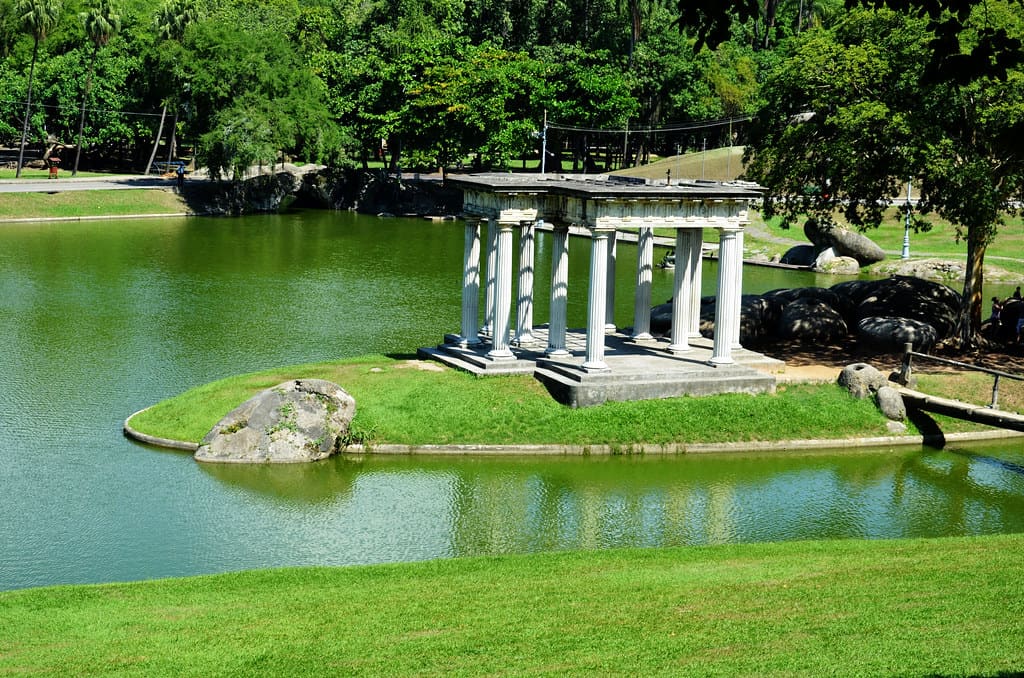
In the 16th century, this vast green area of Rio de Janeiro, now open to the public and beloved by locals, was part of a sizeable Jesuit farm.
Due to its elevated location overlooking Guanabara Bay, the newly constructed home of the property’s new owner was given the name “Quinta da Boa Vista,” which means “Villa of a good view.”
The National Museum holds the country’s biggest zoological, botanical, anthropological, and archaeological collections, comprising over a million pieces.
A small railway takes visitors through the park through gardens featuring lakes, forests, and caves.
A zoo with over two thousand species of birds, reptiles, and mammals from all over the world can be found around the park’s vicinity.
Quinta da Boa Vista is a bustling park on weekends, with many families out for walks and outdoor meals.
This park is a great alternative for anyone looking to experience Rio de Janeiro more authentically away from the city’s most popular tourist attractions.
Address: São Cristóvão, Rio de Janeiro
Santa Tereza and Escadaria Selarón

Relive in Rio’s faded elegance with this nostalgic setting.
Its cafes and restaurants create a bohemian environment, which attracts artists and intellectuals.
If you’re looking for something to do while in town, the church and convent of Santa Tereza, built-in 1720, is an excellent start, as are numerous other historic sites.
Many modern artists, such as Picasso, Miró, and Matisse, are represented in the Museu Chácara do Céu’s collection, including Chinese sculptures from the 17th to the 19th centuries.
One of the city’s most famous staircases, the Escadaria Selarón, connects the Lapa and Santa Teresa districts.
In the years leading up to his death, Chilean-born artist Jorge Selarón covered a lengthy flight of steps outside his home with mosaics composed of tiles, pottery, and mirrors, many in the colors of the Brazilian national flag.
When in Rio, drinking Caipirinha, a sugarcane liquor-based cocktail with lime juice, is a terrific way to socialize with people from Rio de Janeiro or other Brazilian cities.
Address: Rua Manuel Carneiro, Rio de Janeiro
Mosteiro de São Bento
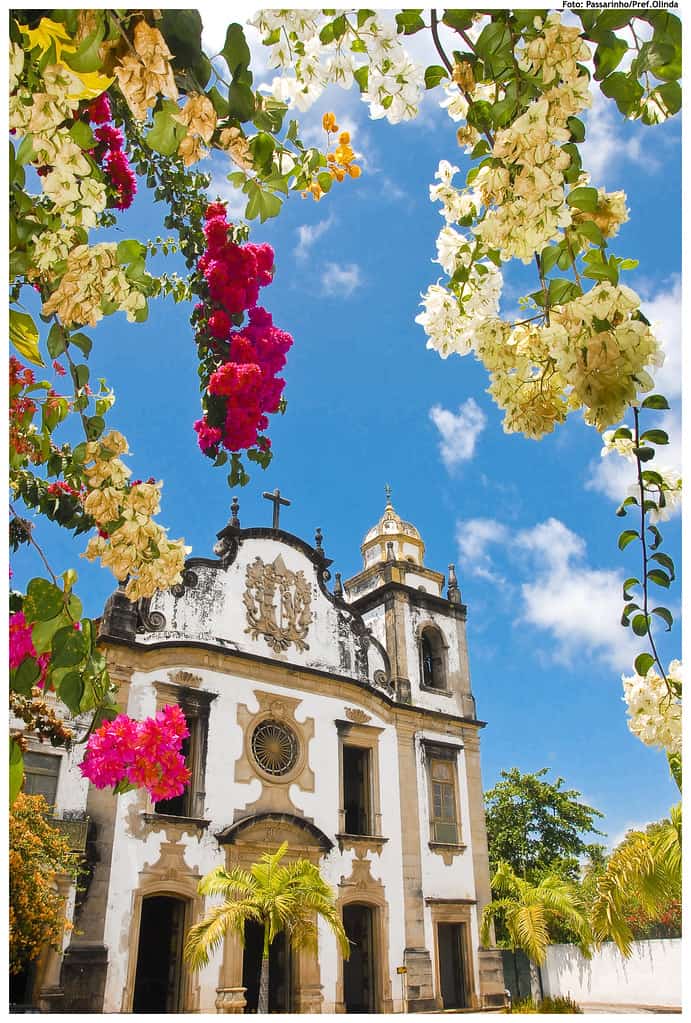
Get to know one of Porto’s most spectacular landmarks.
The church and monastery of São Bento, one of Brazil’s best Benedictine complexes, are perched on a hilltop immediately above the harbor.
The original 1617 church had no aisles until the installation of eight side chapels in the second part of the 17th century.
One of its inner chapels, the Chapel of the Blessed Sacrament, stands out because of its gold leaf coating.
With a baroque and rococo interior design, the Abbey of Our Lady of Monserrate’s carved woodwork is one of Brazil’s most impressive representations of this art form, not just in Rio de Janeiro.
Some of the most talented artisans decorated the inside of the monastery in the Benedictine order.
Dominicus do Conceiço, a monk from the Conceiço monastery, was primarily responsible for the extravagant carvings that decorated the walls and ceiling.
Plan your visit to the Sao Bento Monastery and see what else the city offers!
Address: Rua Dom Gerardo 40, Centro
Sugarloaf
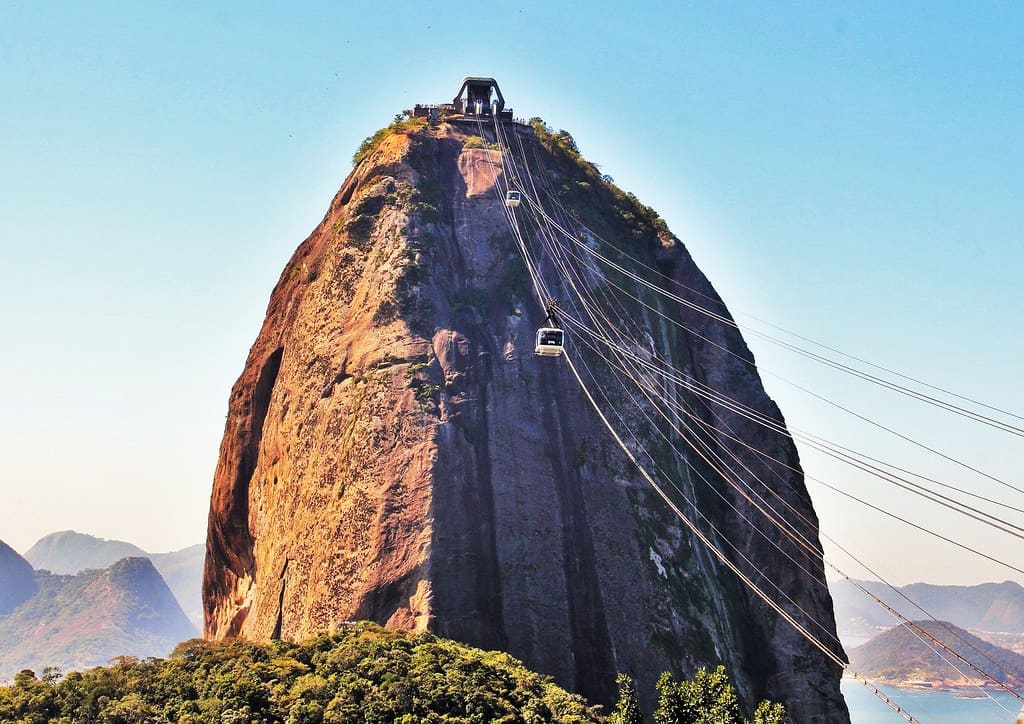
Gorgeous beaches, flawless bodies, carnival, and caipirinhas add up a mountain, making it a one-of-a-kind tourist destination.
There’s no better view of Copacabana and Ipanema’s famed beaches, the mouth of Guanaba Bay, or the Tijuca Forest from the enormous domed-shaped mountain that stands at approximately 1,300 feet above sea level.
Sugarloaf hill, 396 meters above sea level, is accessible by tram from Praia Vermelha via the Urca hill, linked by a second tram from Urca.
When flying into Rio de Janeiro, it’s the first thing you’ll notice, and it’s featured on postcards, posters, novels, and tourism marketing around the world.
A cable car ride to the city’s highest point is a must-do for anyone spending any time in Brazil’s most famous city. From there, you’ll have one of the best views of the entire country.
No one can dispute that Rio de Janeiro could not have been founded in a more picturesque setting, and this was one of the primary reasons we fell in love with the city.
You should place Sugarloaf Mountain on your list of things to do in Rio when planning your trip!
Address: Avenida Pasteur, 520 – Urca, Rio de Janeiro – RJ, 04719-001, Brazil
Tijuca National Park
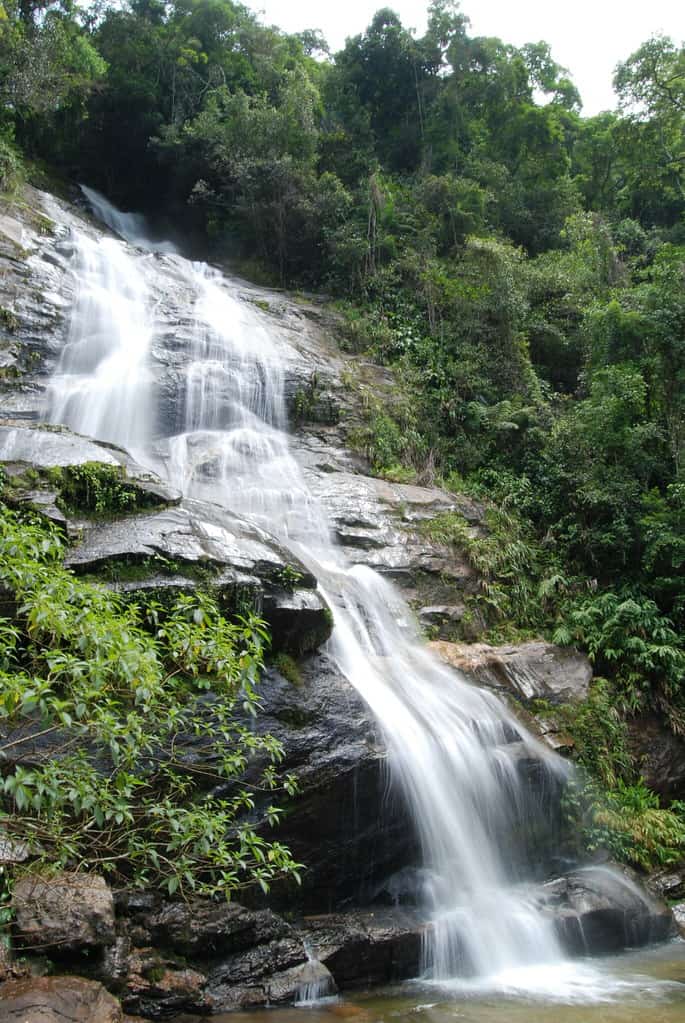
Enjoy panoramic views of the city and the bay from the top of Rio’s highest peak.
The Tijuca National Park is part of the world’s largest urban forests, covering an area of primarily steep terrain.
One of Rio de Janeiro’s most well-known landmarks, Cristo Redentor, is here.
Brazil’s 3,300-hectare Tijuca Forest was established in the late 1850s on the ground demolished by plantations of coffee to protect the springs that supplied Rio de Janeiro’s drinking water.
It’s possible to see Capuchin monkeys, Brazilian raccoons, beautiful toucans, birds, butterflies, and much more wildlife.
The Mayrink Chapel, which features murals by Cândido Portinari, and the Cascatinha Waterfall, a 100-foot-tall waterfall, are two of the most popular attractions in the area.
Largo do Boticário, one of Rio de Janeiro’s most beautiful squares is located near the Corcovado train station.
Furthermore, 380 meters above sea level, tourists can observe the Botanic Garden, the Municipal Park, along with much of the southern coast from the summit of Morro da Vista Chinesa.
Start your endless exploration here now!
Is there anything else holding you back from making Rio de Janeiro, Brazil, your next vacation destination? Click here for all the reasons to visit Rio de Janeiro, Brazil, at least once in your lifetime here.
Address: Estr. da Cascatinha, 850 – Alto da Boa Vista, Rio de Janeiro – RJ, 20531-590, Brazil

